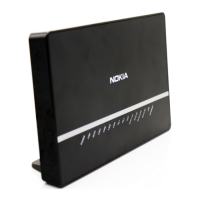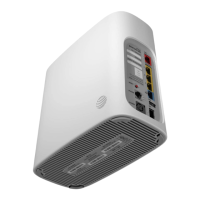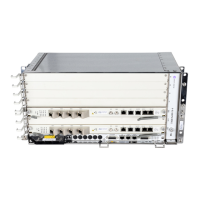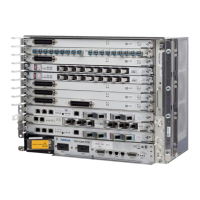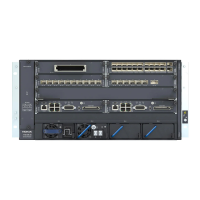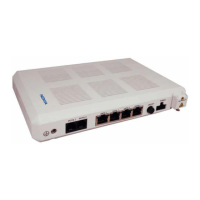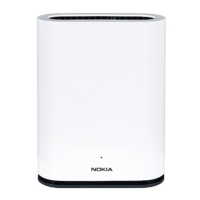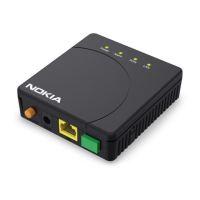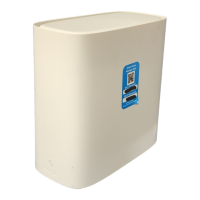
 Loading...
Loading...
Do you have a question about the Nokia 7368 ISAM ONT E-240G-B and is the answer not in the manual?
| Brand | Nokia |
|---|---|
| Model | 7368 ISAM ONT E-240G-B |
| Category | Network Hardware |
| Language | English |
This documentation set provides information about safety, features, functionality, ordering, hardware and software installation.
This documentation set is intended for planners, administrators, operators, and maintenance personnel.
The reader must be familiar with general telecommunications principles.
The expansions and optional descriptions of most acronyms and initialisms appear in the glossary.
Provides information on global technical support and ordering contact details.
Details Nokia's ONU quality practices and compliance with TL 9000 requirements.
Refers the reader to the appropriate safety guidelines chapter for safety information.
Information on how documents are available using ALED or OLCS platforms.
Explains how special information like Danger, Warning, Caution, and Note are presented.
Explains how options and required substeps are identified in procedures.
Provides instructions on how to search multiple PDF files for a common term using Adobe Reader.
Describes environmental instructions provided with customer documentation and equipment.
Explains the applicability of CRoHS to Electronic Information Products manufactured or sold in China.
Details environmental labels found on appropriate equipment, including MCV labels.
Shows and describes the label for products below maximum concentration value, indicating recyclability.
Shows and describes the label for products above maximum concentration value, indicating EFUP value.
Details compliance with CRoHS standard and provides a link to the Nokia Hazardous Substance Table.
Outlines environmental requirements for handling P-OLT or ONU equipment.
Refers to ONU technical specification documentation for temperature range information.
Specifies storage requirements for OLT equipment according to ETS 300-019-1-1.
Specifies transportation requirements for OLT equipment according to EN 300-019-1-2.
Specifies stationary use requirements for OLT equipment according to EN 300-019-1-3.
Details thermal limitations for OLT operation in CO or CEV environments.
Explains compliance with EU RoHS Directive and Nokia's material management process.
Describes requirements for collection and treatment of electronic products at end of life.
Describes safety instructions provided in ONU customer documentation and on equipment.
Explains the meaning of Danger, Warning, Caution, and Note boxes in safety instructions.
Details safety instructions and compliance information on ONU equipment labels.
Describes ONU compliance with European safety standards.
Lists EMC, EMI, and ESD requirements the ONU equipment complies with.
States compliance of ONU equipment with EN 60950-1 safety standard.
Confirms ONU equipment compliance with EN 300 019 European environmental standards.
Details ONU compliance with EN 60825-1 and IEC 60825-2 for laser products.
Confirms ONU compliance with ITU Recommendation K.21 for resistibility.
States ONU compliance with EN 300 753 acoustic noise emission standards.
Provides electrical safety guidelines for the ONU equipment.
Advises on the use of approved power supplies and the consequences of using non-approved ones.
Provides guidelines regarding cables used for the ONU equipment.
Specifies that earthing and bonding must comply with local electrical codes.
Instructs operations personnel on ESD precautions when handling ONU equipment.
Details safety instructions for installation, operation, and maintenance of ONU equipment concerning lasers.
States that the ONU is classified as a Class 1 laser product.
Shows sample labels related to laser product, classification, and warning.
Specifies the maximum transmit optical output of an ONU.
Describes normal laser operation and safety precautions for optical modules.
Provides guidance on using cable supports and guides to protect receptacles.
Provides recommendations to avoid condensation caused by rapid temperature and humidity changes.
Describes safety instructions provided in ONU customer documentation and on equipment.
Explains the meaning of Danger, Warning, Caution, and Note boxes in safety instructions.
Details safety compliance information and instructions on ONU equipment labels.
Describes ONU compliance with North American safety standards.
Lists EMC, EMI, and ESD requirements that the ONU equipment complies with.
Confirms that the E-240G-B meets CE safety standards.
States ONU compliance with UL60950-1 and other relevant safety standards.
Details ONU compliance with 21 CFR 1040.10 and CFR 1040.11 for laser products.
Confirms ONU compliance with ITU Recommendation K.21 for resistibility.
Details safety instructions for installation, operations, and maintenance concerning laser hazards.
Shows sample labels related to laser product, classification, and warning.
States that the ONU is classified as a Class 1 laser product.
Specifies the maximum transmit optical output of an ONU.
Describes normal laser operation and safety precautions for optical modules.
Provides guidance on using cable supports and guides to protect receptacles.
Provides electrical safety guidelines for the ONU equipment.
Advises on the use of approved power supplies and the consequences of using non-approved ones.
Provides guidelines regarding cables used for the ONU equipment.
Specifies that earthing and bonding must comply with NEC article 250 or local codes.
Instructs operations personnel on ESD precautions when handling ONU equipment.
Provides recommendations to avoid condensation caused by rapid temperature and humidity changes.
Provides identification information and ordering kit part numbers for E-240G-B ONUs.
Describes the E-240G-B ONU's subscriber interface and its compatibility with existing equipment.
Explains the support and operation of Turbo mode for increased downstream bandwidth.
References other documents for information on installing, replacing, software, and management.
Describes the supported interfaces and their capacity for E-240G-B ONUs.
Illustrates the physical connections and components of the E-240G-B ONU.
Lists and describes the function of the LEDs on the E-240G-B ONU.
Provides detailed physical specifications, including dimensions and weight, for E-240G-B ONUs.
Illustrates the functional blocks of an ONU with Gigabit Ethernet and POTS.
Lists the standards that E-240G-B ONUs are compliant with.
Declares compliance with EU directives for energy-related products in standby and off modes.
Confirms that the E-240G-B meets CE safety standards.
References laser safety guidelines for information on laser product standards compliance.
Provides the FCC compliance statement for the device.
Identifies the party in the US responsible for the ONU.
Lists any special considerations related to the E-240G-B.
States that this chapter provides the steps to install an E-240G-B ONU.
Describes mounting and cabling procedures for the E-240G-B ONUs.
Lists the necessary prerequisites for installing an E-240G-B ONU.
Lists the tools required for the installation of an E-240G-B ONU.
Provides critical safety information and warnings before installing the ONU.
Details the step-by-step procedure for installing an E-240G-B ONU.
Describes how to mount E-240G-B ONUs in an MNTS-A shelf.
States that this chapter provides the steps to replace an E-240G-B ONU.
Describes mounting and cabling procedures for replacing an E-240G-B ONU.
Lists the necessary prerequisites for replacing an E-240G-B ONU.
Lists the tools required for replacing an E-240G-B ONU.
Provides critical safety information and warnings before replacing the ONU.
Details the step-by-step procedure for replacing an E-240G-B ONU.
Describes the additional steps to replace an ONU in an MNTS-A shelf.
Refers to OLT documentation for software configuration procedures for an E-240G-B ONU.
Details specific dangers and considerations for handling grounding equipment to prevent injury or damage.
